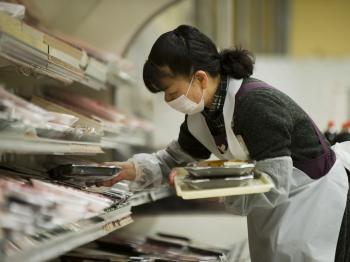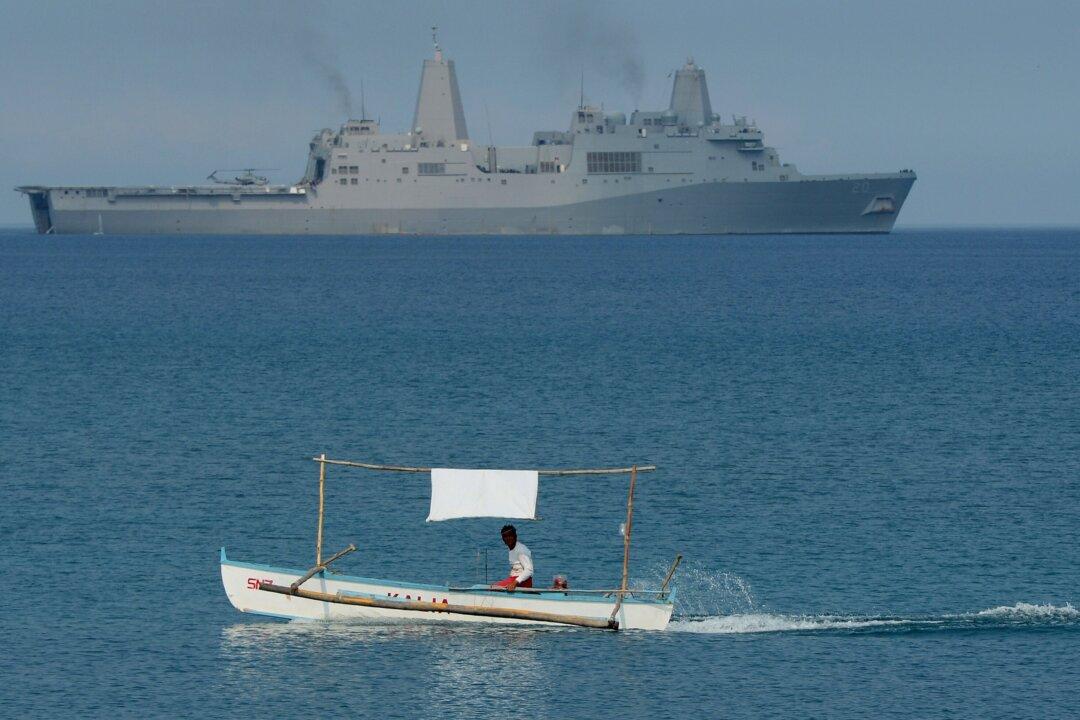Concerns are mounting that radiation leaks from Japan’s stricken nuclear plant in Fukushima may be more dangerous than authorities are admitting.
Mr. Hidehiko Nishiyama from the Nuclear and Industrial Safety Agency, a regulatory branch of the Japanese Ministry of Economy, Trade, and Industry, told reporters that radiation levels in the sea surrounding the plant have soared with radioactive iodine-131 registering 3,350 times the legal limit, Australia’s national broadcaster, the ABC, reported.
Mr. Nishiyama, however, said there was no need for concern, and people needed to stay calm.
“People don’t drink seawater,” he said on the ABC in a translation, “and with the currents the radioactive material will dissipate quickly.”
“Also iodine-131 has a short half-life of eight days,” he continued, “So even if sea produce is found with high concentrations of radioactivity, by the time it’s consumed by humans the levels will have diminished considerably.”
While it is true that iodine-131 has a short half-life, Associate Professor Mark Diesendorf, author and deputy head of the Institute of Environmental Studies at the University of NSW, said the comments were irresponsible. “People eat fish and other sea creatures and they will be taking up the radiation,” he told The Epoch Times.
“What they are not saying is that if they are measuring iodine-131 in some concentration, it is certain that there will be other isotopes that they are not detecting, which are also coming out with it but maybe harder to detect,” Dr. Diesendorf added.
Dr. Diesendorf has a degree in physics and has been principal research scientist in Australia’s top science research organization, the CSIRO.
He said the leakage of plutonium-239 is of great concern but harder to detect.
“Plutonium-239 emits alpha particles, which only travel a short distance,“ Dr. Diesendorf said, “and they are totally harmless if outside the human body or an organism. But if they get inside, these are heavy particles. They can do an enormous amount of damage.”
Mr. Hidehiko Nishiyama from the Nuclear and Industrial Safety Agency, a regulatory branch of the Japanese Ministry of Economy, Trade, and Industry, told reporters that radiation levels in the sea surrounding the plant have soared with radioactive iodine-131 registering 3,350 times the legal limit, Australia’s national broadcaster, the ABC, reported.
Mr. Nishiyama, however, said there was no need for concern, and people needed to stay calm.
“People don’t drink seawater,” he said on the ABC in a translation, “and with the currents the radioactive material will dissipate quickly.”
“Also iodine-131 has a short half-life of eight days,” he continued, “So even if sea produce is found with high concentrations of radioactivity, by the time it’s consumed by humans the levels will have diminished considerably.”
While it is true that iodine-131 has a short half-life, Associate Professor Mark Diesendorf, author and deputy head of the Institute of Environmental Studies at the University of NSW, said the comments were irresponsible. “People eat fish and other sea creatures and they will be taking up the radiation,” he told The Epoch Times.
“What they are not saying is that if they are measuring iodine-131 in some concentration, it is certain that there will be other isotopes that they are not detecting, which are also coming out with it but maybe harder to detect,” Dr. Diesendorf added.
Dr. Diesendorf has a degree in physics and has been principal research scientist in Australia’s top science research organization, the CSIRO.
He said the leakage of plutonium-239 is of great concern but harder to detect.
“Plutonium-239 emits alpha particles, which only travel a short distance,“ Dr. Diesendorf said, “and they are totally harmless if outside the human body or an organism. But if they get inside, these are heavy particles. They can do an enormous amount of damage.”






